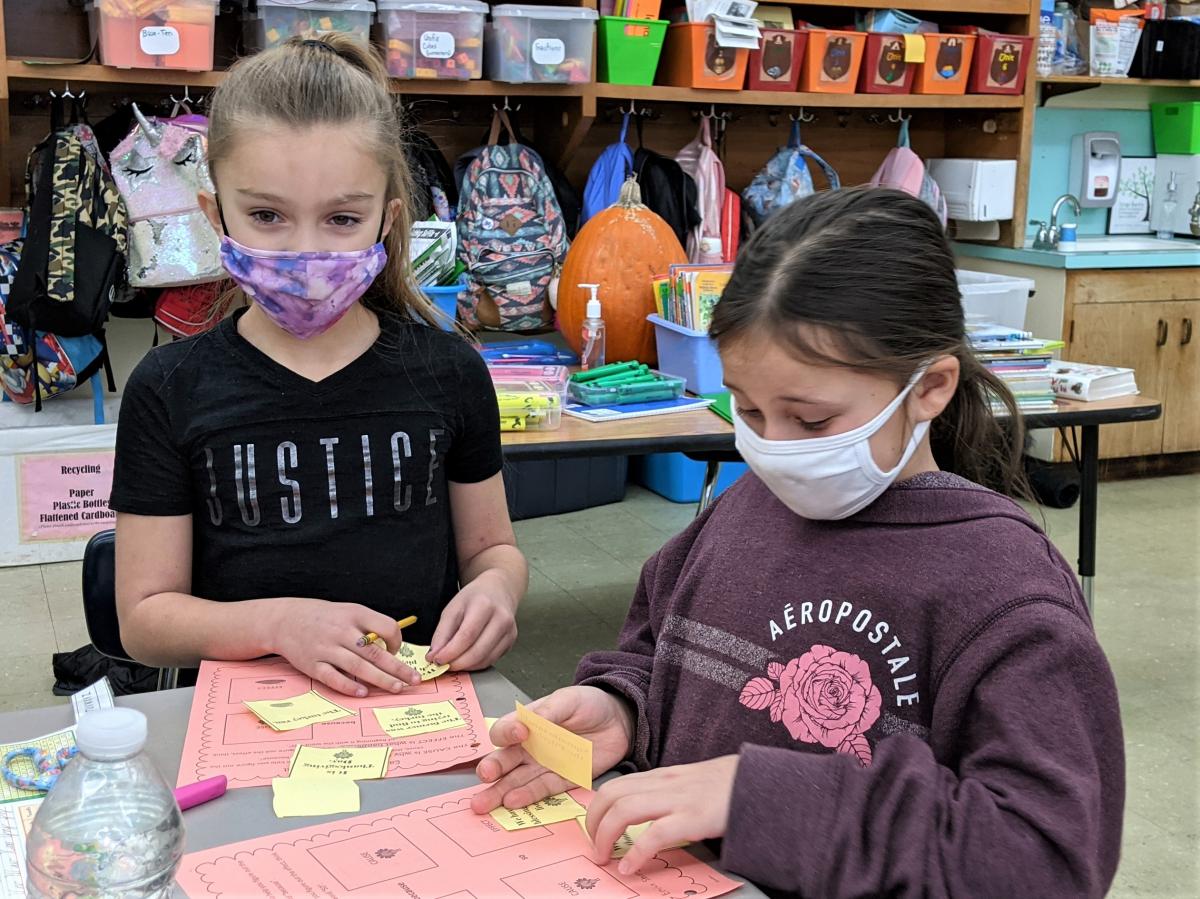District Office
20256 Grim Road NE
Aurora, Oregon 97002
Phone number: (503) 678‑7100
20256 Grim Road NE
Aurora, OR 97002
Phone: (503) 678-7100
Fax: (503) 386-4659

A Return to In-Person Classrooms is a four-part series during which we will be visiting classrooms all over the North Marion campus: four schools, four classrooms. The series is shining a light on all that is possible now that students have once more returned to the classroom. Check out Part 1 (Primary School), Part 2 (High School), and Part 4 (Middle School) of the series. This is, of course, Part 3 (Intermediate School).
By Jillian Daley
Earlier this week, North Marion Intermediate School Teacher Jana Giles’s third-grade students enjoyed a hands-on lesson in cause and effect. Giles began with the cause.
“What happened because we ate too much pumpkin pie?”
“We got sick!” yelled one student. “We don’t want to eat it anymore!” said another. “Diarrhea!” shouted a third.
After Giles explained the concept, she tasked students with cutting out potential causes and effects from a sheet of paper and then pairing them up. Even more than the hands-on task or easier access to teacher or peer support, students said that being a part of a learning community best explained their love of in-person school and also re-ignited their love of learning.
“Part of elementary school is having relationships with your peers,” Giles says. “That’s something I’ve taught them from day one. Your class is your team. We’re going to lift each other up.”
Of course, third-grader Gianna Rivera wisely points out that it helps to have a good teacher like Giles. But what makes a good teacher?
“It’s about how they treat you: She treats me good,” Gianna explains. “She helps me with math. She tells me how to do it, and we go from there.”
Gianna says she prefers in-person learning, partly because when she was enrolled in the Virtual Online Learning program her computer would sometimes cut out. But most of all, she revels in the social aspect of in-person learning.
“I know a lot of people here,” she says. “I still get to see people online, but in person I actually get to go to lunch and play at recess. It’s good.”
Her classmates, Emily Snegireff and Ivan Gabriel Herrera, felt similarly.
“I actually get to meet people,” Emily agrees.
The social connection inspires students to come to class and, being surrounded by so many friendly faces (and exciting books!) can help them learn.
Ivan’s favorite part about returning to the classroom is reading, which is easy to do in school with so many books piled on the shelves, especially his favorite Pokemon adventures.
“You can learn,” Ivan says, something that helps you get “even smarter.”
So many other students just felt more comfortable at a physical desk.
“This is better because when I was online I got kind of bored, but now I can see my friends — not only see them but talk to them,” Cristian Fraile says.
Estefany Gasca Rojas says sometimes the online world can be “hard because sometimes I don’t know what to do.” But with her teacher so near and her fellow students embracing her in community, Estefany happily worked on the cause-and-effect assignment.
“Even with me partnering them up, every time they get a chance to work with someone else they’re constantly asking for that because they missed that so much,” Giles says. “That is such a core value to them.”
To share a North Marion story, email Communications Specialist Jillian Daley at jillian.daley@nmarion.k12.or.us.